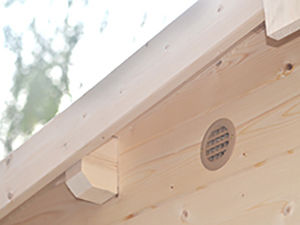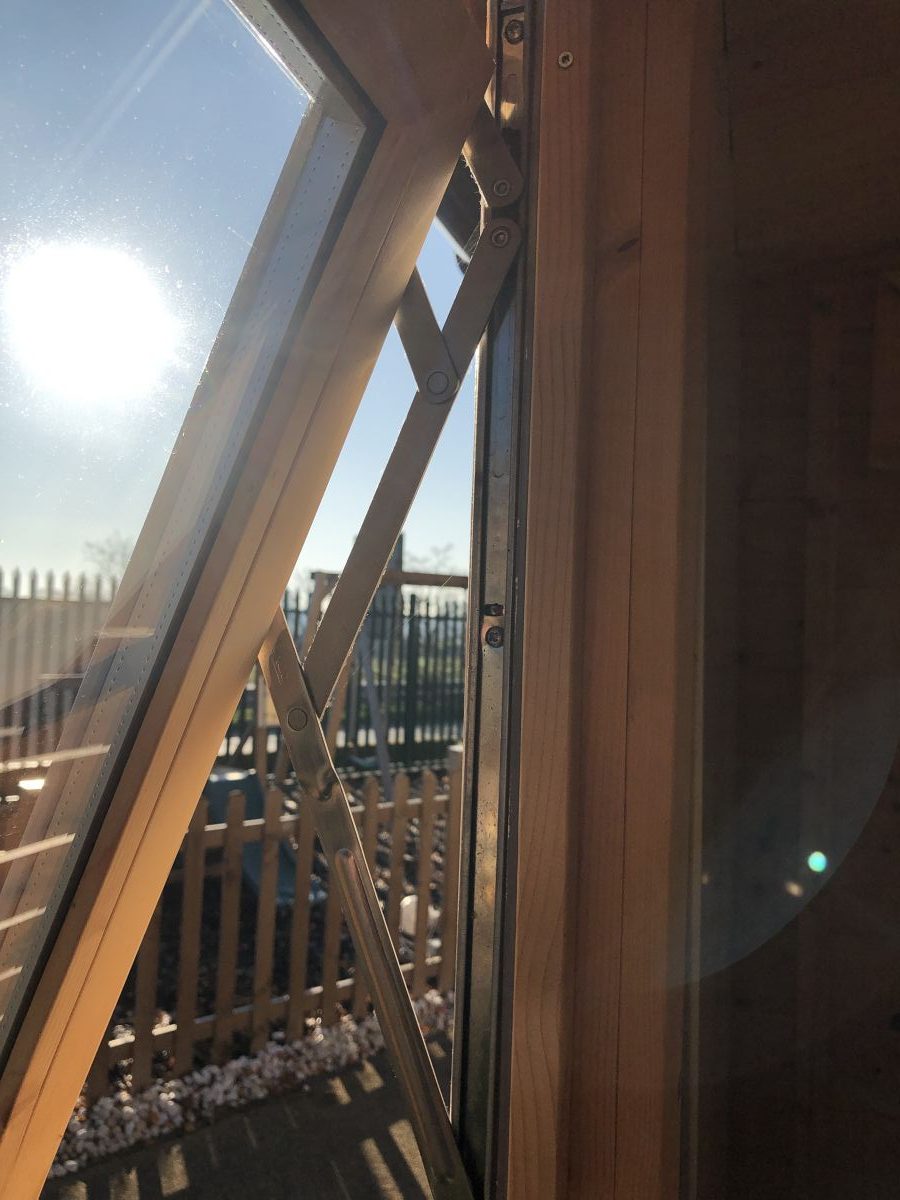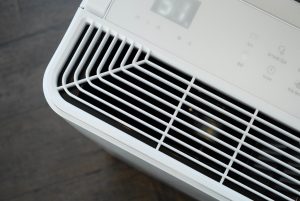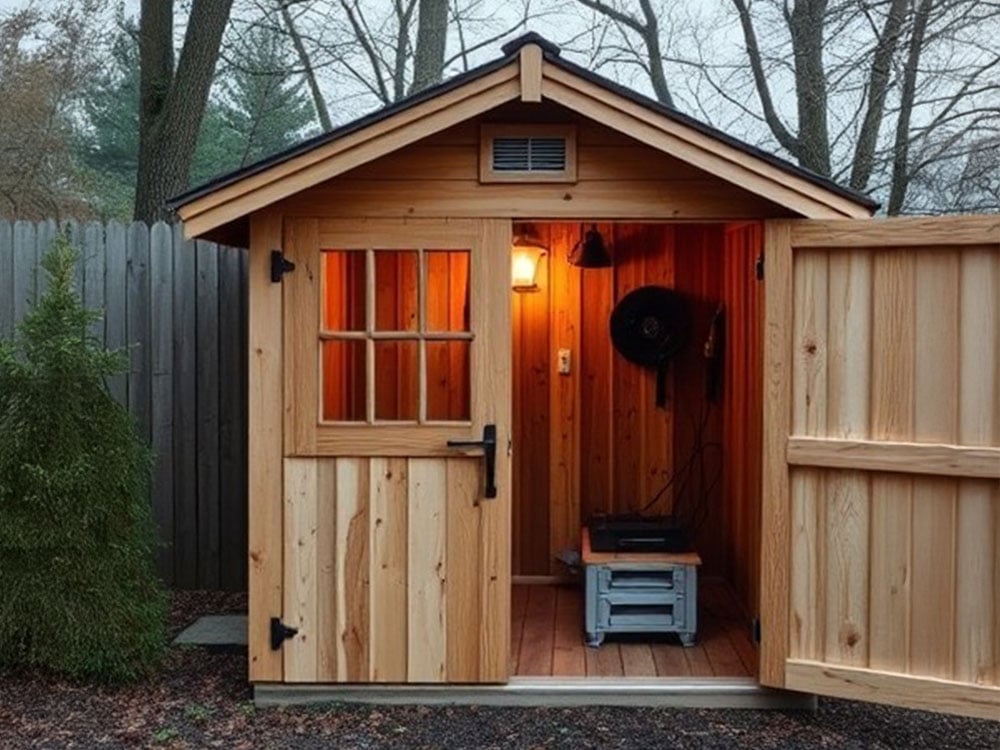Ventilating a shed will reduce shed dampness, dust and is essential for the care and maintenance of your shed. To learn more about common symptoms and signs indicating shed dampness, different types of garden building ventilation solutions and how each ventilation method works.
Contents
- How to Know if Your Shed Needs Ventilation
- Why Shed Ventilation is Important
- Ventilation Solutions
- Maintenance of Your Ventilation System
How to Know if Your Shed Needs Ventilation
Rust, Mould and Mildew
Rust on your tools and mould on your possessions are clear red flags for moisture build-up in your garden building. For dealing with both of these issues vinegar will be your best friend. Mixed with salt it is excellent at dealing with rust and sprayed onto mould and given time will work to reduce the effect of the mould. Alternatively, you could get specialised products that deal with these issues.
A musty or stale smell
Ventilation is twice as effective for a stale smell as it targets both the cause and effect. It is best to check for mould on your possessions as it tends to go hand in hand with a musty smell.
Warping
If the moisture content in your shed is high it could lead to the timber of your shed warping. One way to avoid this is ventilation, another would be treating the wood inside and out. However, that can be quite an unpleasant task so instead consider opting for a fully pressure-treated shed (like our sheds are!). Not only does it save you the hassle of doing it yourself, but the treatment is deeply ingrained into the timber.
 Condensation
Condensation
Here is where having windows in your shed can get a little tricky if you use them they can be valuable for passive ventilation. However, if you aren’t opening them it will act to increase condensation in your shed, making it damp. Condensation is the source of the most common manifestation of dampness; if it is much colder outside the shed than inside condensation is likely to occur.
Hygrometer
A hygrometer is an instrument that measures the moisture content in the air and humidity. Cold and hot air each have a maximum amount of moisture saturation; cold air has a lower maximum moisture saturation point than hot air. A good moisture content in the air is between 30-60%.
Why Shed Ventilation is Important
Moisture and dampness
Moisture and dampness can lead to many problems. These include mould, fungus, bacteria, viruses, and toxins.
These can result in symptoms that are harmful to your health. These symptoms can include skin irritation, eye irritation, illness and respiratory issues. This should show you the importance of ventilation.
Dust
Where dust is also more prevalent, you’ll need to properly ventilate. If you use your shed regularly, the air quality must be acceptable. Dust can harm your breathing if you breathe it in for a long time. It may contain dead skin cells, bacteria, fungal spores, and other particles.
Shed size
Larger sheds will require more and/or better ventilation methods than smaller sheds. If you are storing liquids in your shed, sufficient ventilation will be even more necessary. However, airflow will be increased if you have gaps between your possessions and the walls of your shed.
Ventilation Solutions
Passive ventilation
Passive ventilation uses natural air currents as a ventilation method. Windows, bearers and good foundations are excellent ways to allow for increased airflow throughout your garden building. We provide wall vents with our log cabins and garages, the larger garden buildings in our range. These offer a great source of passive ventilation with only the occasional cleaning necessary to keep them in working order.
Consider the need for ground/floor level shed ventilation, failing to do so could end up encouraging your timber to  rot. To avoid this problem, especially with a concrete base, treat your bearers. They are likely to
rot. To avoid this problem, especially with a concrete base, treat your bearers. They are likely to
get damp from the ground. Another way to help avoid wood rot would be by incorporating a foundation system that allows more ventilation and drainage such as RapidGrids.
Windows are a classic method of ventilation, and that’s for a reason, they can help improve air quality, reduce moisture content and regulate temperature. Wide-opening windows and tilt-and-turn windows are the best for regulating and controlling ventilation. The effectiveness of windows for ventilation depends on the outside environment. If the air quality is poor or the outside humidity is equal to or higher than inside, windows may not be the best choice.
Powered ventilation
Powered ventilation on the other hand refers to mechanically operational ventilation systems: fans, to encourage passive ventilation and dehumidifiers, take some of the water content from the air directly targeting the cause. To power these you need to consider what power source they will need: mains power, solar power or batteries.
Types of dehumidifier
Desiccant dehumidifiers are effective in temperatures between 1-20°C as they use hygroscopic materials and heat to take water from the air. These dehumidifiers are smaller and lighter than the compressors, and they will produce more heat as well. So, unless you plan to heat your shed, this will probably be the best option for you.
in temperatures between 1-20°C as they use hygroscopic materials and heat to take water from the air. These dehumidifiers are smaller and lighter than the compressors, and they will produce more heat as well. So, unless you plan to heat your shed, this will probably be the best option for you.
Compressor dehumidifiers work best in temperatures over 20°C due to the fact that they use cold rods to create condensation within the dehumidifier. Compressors are more energy efficient than desiccant dehumidifiers and work well in areas of high humidity or with a lot of space.
Plants
If you’re looking for a natural alternative that will nicely blend with your garden while still providing air purification and dehumidification plants are a good choice. Plants can absorb water from their environment through their leaves. Plants that would be good for reducing moisture saturation and improving air quality include peace lilies, Boston ferns and spider plants.
Maintenance of Your Ventilation System
Cleaning
Ensuring your shed is tidy, clean and well laid out is integral to improving your shed ventilation. This will help in preventing optimal airflow from being blocked. This is also why it is important to buy the right shed for you and your garden’s needs (don’t just try to cram lots of stuff in a small shed!).
Filters are typically a feature of powered ventilation systems and will need to be cleaned. To clean a fan, first, take it apart. Then, wipe the parts with a damp cloth. Let the components dry completely. After that, put the fan back together.
For dehumidifiers, you need to remove and clean the water tank. Also, check for any blockages. These steps can greatly affect how well your dehumidifier works.
You will also need to dust your humidifier. It is easiest to do this with a cloth or a vacuum cleaner, if it has the right attachment.
Repairs and Upgrades
The need for repairs and upgrades applies to your shed, possessions and ventilation equipment. The effect of making repairs is reciprocal, by improving the state of one it will positively reflect on the others.
Seasonal Adjustment
Your shed will require more ventilation in the summer than in the winter. The heat exacerbates the condensation process and increases dampness in your garden building.





